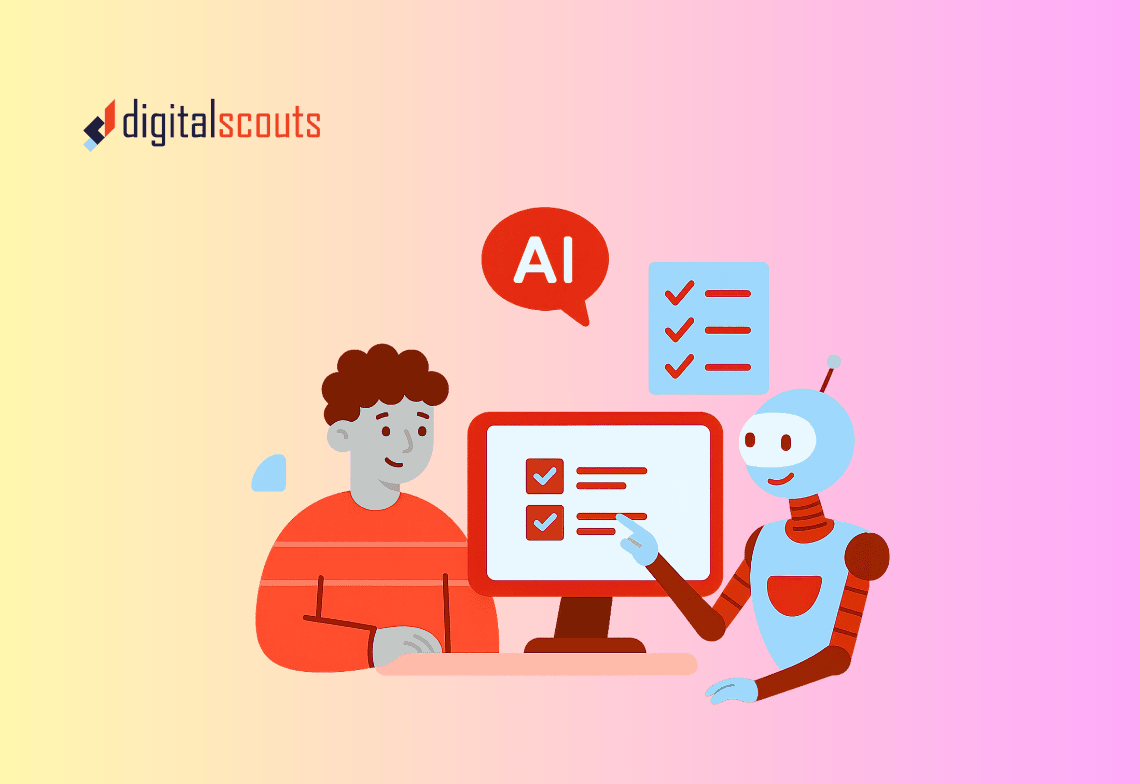In B2B marketing, website traffic has long been used as the main indicator of success. But a surge in visitors means little if it does not translate into qualified leads, opportunities, and revenue. For modern marketers, the real question is no longer “how do we drive more traffic?” but “how do we turn that traffic into pipeline?”
A pipeline-driven content strategy connects marketing activity directly to sales outcomes. It focuses on attracting the right audience, nurturing them through every stage of the buyer journey, and enabling sales with content that converts. This article explores how B2B marketers can move beyond vanity metrics and build a content system that consistently drives growth.
The Shift from Traffic to Pipeline
Traditional content strategies were designed for visibility — blogs, videos, and social posts aimed at generating clicks and impressions. While reach still matters, it is only the first step in a longer journey. The B2B buying process involves multiple decision makers, long research cycles, and high-value investments. Success depends on engaging the right stakeholders with the right information at the right time.
A pipeline-focused approach recognises content as a business driver, not just a communication tool. Every piece of content should have a measurable impact on lead quality, sales velocity, or customer retention.
1. Know Your Audience and Map the Buyer Journey
Every effective B2B content strategy begins with a clear understanding of the audience. This means going deeper than demographics to uncover motivations, pain points, and decision criteria.
Map this understanding to the stages of the buyer journey:
Awareness – At this stage, prospects are identifying challenges. Use educational blogs, infographics, and videos that help them define the problem and introduce possible solutions.
Consideration – Prospects are researching vendors and solutions. Whitepapers, comparison guides, and webinars work best here to demonstrate expertise and build trust.
Decision – The focus shifts to justification and ROI. Case studies, testimonials, demos, and pricing calculators help prospects make confident purchase decisions.
Aligning content to these stages ensures your marketing assets nurture prospects naturally toward becoming sales-ready leads.
2. Audit and Analyse Existing Content
Before building new content, analyse what you already have. A content audit reveals which assets generate engagement, where gaps exist, and how well your current library supports the buyer journey.
Look for:
-
Content that drives conversions, not just page views
-
Gaps in specific funnel stages or industry segments
-
Opportunities to refresh or repurpose outdated assets
Tools like HubSpot or Semrush can help track performance and map existing content to funnel stages. A gap analysis then shows where to focus new creation efforts, ensuring every new asset serves a strategic purpose.
3. Create Content That Serves a Business Purpose
Quality now outweighs quantity. In B2B, your audience values insight and expertise over volume. Each piece should have a clear goal — to educate, qualify, or convert.
Key content types that drive pipeline
Thought leadership and research reports
Position your brand as a trusted authority by publishing original data, frameworks, or expert insights. These assets attract high-intent buyers looking for credible information.
Case studies and success stories
Proof of impact is powerful. Real client results show prospects the tangible value you deliver, making them essential for the decision stage.
Webinars and live sessions
Interactive formats build trust and allow potential buyers to engage directly with your experts.
Interactive tools and calculators
Help prospects quantify challenges or measure ROI. These tools collect valuable data and accelerate qualification.
Video content
Short explainers, demos, and customer stories communicate complex information quickly and are easily shared across channels.
Every content piece should close with a clear next step — download, subscribe, book a demo, or talk to sales. Strong calls to action keep momentum moving through the funnel.
4. Distribute Intelligently
Great content delivers no value if it goes unseen. Distribution is where most strategies fall short. The aim is to reach your ideal buyers where they already spend time — not just to broadcast but to engage.
Core distribution channels
Search (SEO)
Optimise for intent-driven keywords your audience actually searches for. Combine technical SEO with topic clusters and internal linking to strengthen authority.
LinkedIn and social media
Share short insights, clips, and infographics that spark conversation. Use employee advocacy to extend reach and authenticity.
Email marketing and automation
Segment lists by industry, persona, and funnel stage. Deliver tailored content that builds trust over time.
Paid amplification
Promote high-value content such as webinars or reports through targeted LinkedIn and Google Ads campaigns to reach new audiences quickly.
Partnerships and thought leadership platforms
Collaborate with complementary brands or industry publications to expand your reach and credibility.
A multi-channel approach ensures your content consistently reaches and nurtures qualified prospects.
5. Connect Content with RevOps and CRM Data
To make content a revenue driver, it must integrate with your sales and RevOps systems. HubSpot is a powerful enabler here, allowing marketers to track how content influences deals and revenue.
Practical steps:
-
Use CRM data to understand which content assets support the highest-converting deals.
-
Create dashboards that show pipeline contribution and conversion rates by content type.
-
Automate nurture workflows that trigger relevant content based on lead behaviour.
-
Align sales enablement materials — case studies, battlecards, and product one-pagers — with marketing campaigns to ensure consistency.
By tying content engagement directly to pipeline metrics, marketing gains a clear link to revenue, improving both accountability and investment justification.
6. Measure What Matters
Metrics should reflect business outcomes, not vanity numbers. Move beyond clicks and impressions to focus on performance indicators tied to pipeline impact.
Key metrics include:
-
Number of new leads generated by content
-
Marketing qualified leads (MQLs) and sales qualified leads (SQLs)
-
Conversion rates from content downloads or webinar registrations
-
Deal influence and pipeline value from organic and paid content
-
ROI per content type or campaign
Review performance regularly and double down on formats or topics that consistently contribute to revenue.
7. Combine AI Efficiency with Human Expertise
AI tools can accelerate research, ideation, and optimisation, but human insight remains the differentiator. AI can generate drafts, analyse trends, or suggest keywords, but your experts add the nuance, voice, and credibility that earn trust.
Use AI to scale efficiency and humanise the final output through experience, data, and storytelling. This balance ensures your content stays authentic while leveraging technology to increase speed and consistency.
8. Build for Longevity and Scale
Pipeline-driven content is not campaign-based; it is an always-on system. Build processes that keep your strategy agile and sustainable:
-
Repurpose high-performing assets into multiple formats.
-
Update cornerstone content quarterly to maintain ranking and relevance.
-
Document workflows in HubSpot for repeatable creation and reporting.
-
Align editorial planning with your sales calendar and product launches.
The goal is to create a content engine that continuously fuels lead generation, sales enablement, and retention.
Final Thoughts
Traffic matters, but pipeline is what drives growth. A B2B content strategy that focuses on education, alignment, and measurable outcomes creates tangible value across the entire buyer journey.
By connecting insights from SEO, automation, and RevOps, your content becomes more than marketing material — it becomes a predictable revenue generator.
At Digitalscouts, we help B2B organisations design content ecosystems that connect marketing performance to pipeline impact. From strategy and SEO to HubSpot implementation and analytics, we ensure every asset drives measurable business results.
If you are ready to turn your content strategy into a growth engine, contact Digitalscouts for a strategy consultation.
Frequently Asked Questions
High-intent formats such as case studies, webinars, ROI calculators, and industry research reports perform best. They demonstrate value, educate buyers, and shorten decision cycles. Combining these with SEO-optimised blogs and gated offers creates a balanced content funnel that converts.
About Author
Ashish is a B2B growth strategist who helps scaleups align marketing and sales through Account-Based Marketing (ABM), RevOps, and automation. At DigitalScouts, he builds scalable content engines, streamlines lead flows with HubSpot, and runs targeted GTM programs to drive predictable pipeline. He regularly shares insights on using AI and automation to power ABM and accelerate complex buyer journeys.







.png)
